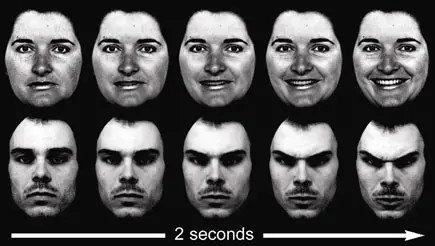The question of whether emotions are innate or learned has fascinated scientists for decades. Early research suggested a universality of emotions, positing that they are biologically driven responses shaped by evolution for survival. Fear in the face of danger, love for offspring – these seemed to transcend cultural boundaries, even appearing in non-human primates.
However, recent research challenges this view, proposing that emotions are learned constructs shaped by individual experiences and cultural knowledge. This perspective, championed by psychologist Lisa Feldman-Barrett in her book How Emotions Are Made, ignited a debate about the true nature of emotions. This article delves into the complexities of this debate, examining the evidence for both learned and innate emotional responses. We will explore what constitutes a learned emotion and how this concept impacts our understanding of human behavior.
The Case for Learned Emotions: The Muffin-Cupcake Analogy
Feldman-Barrett argues that emotions are not hardwired but are constructed based on prior knowledge and social context. She points to the difficulty in accurately interpreting facial expressions, highlighting how even seemingly obvious displays of emotion can be misconstrued. She uses the analogy of differentiating a muffin from a cupcake: the distinction isn’t inherent to the ingredients but relies on learned social conventions. Similarly, she argues that emotions are social realities, learned and applied based on cultural norms and individual experience.
While most researchers acknowledge the role of learning in shaping emotional expression and understanding, critics of the purely constructed view point to growing neuroscientific evidence. Studies using brain imaging have identified distinct neural patterns associated with specific emotions, suggesting a biological basis for at least some core emotional states.
Nature and Nurture: A Complex Interplay
The debate isn’t necessarily an either/or proposition. A more nuanced perspective acknowledges the interplay of both innate predispositions and learned influences in shaping emotions. Some basic emotions like fear or joy may have a strong biological foundation, providing a starting point for emotional development. These foundational emotions may then be elaborated upon and nuanced through learning and experience, resulting in the complex range of emotions humans experience.
Consider the example of anger. While the physiological response to a perceived threat might be innate, the specific triggers for anger, its expression, and its regulation are heavily influenced by cultural and personal experiences. What angers one person might not faze another, highlighting the role of learned associations in shaping emotional responses.
Implications for Emotional Well-being
Understanding emotions as learned constructs opens possibilities for consciously shaping our emotional landscape. Mindfulness practices, for example, can help us become more aware of our emotional responses and the learned expectations that influence them. By recognizing the constructed nature of emotions, we can potentially gain greater control over our reactions and cultivate greater emotional well-being.
Conclusion: Embracing the Complexity of Emotions
The question of “What Is A Learned Emotion” remains a complex one, with ongoing research continuing to unravel the intricate interplay of biology, experience, and culture. While some core emotional responses may be innate, learning clearly plays a crucial role in shaping the nuances of emotional experience, expression, and regulation. By embracing this complexity, we can develop a more holistic understanding of human emotions and their impact on our lives.

